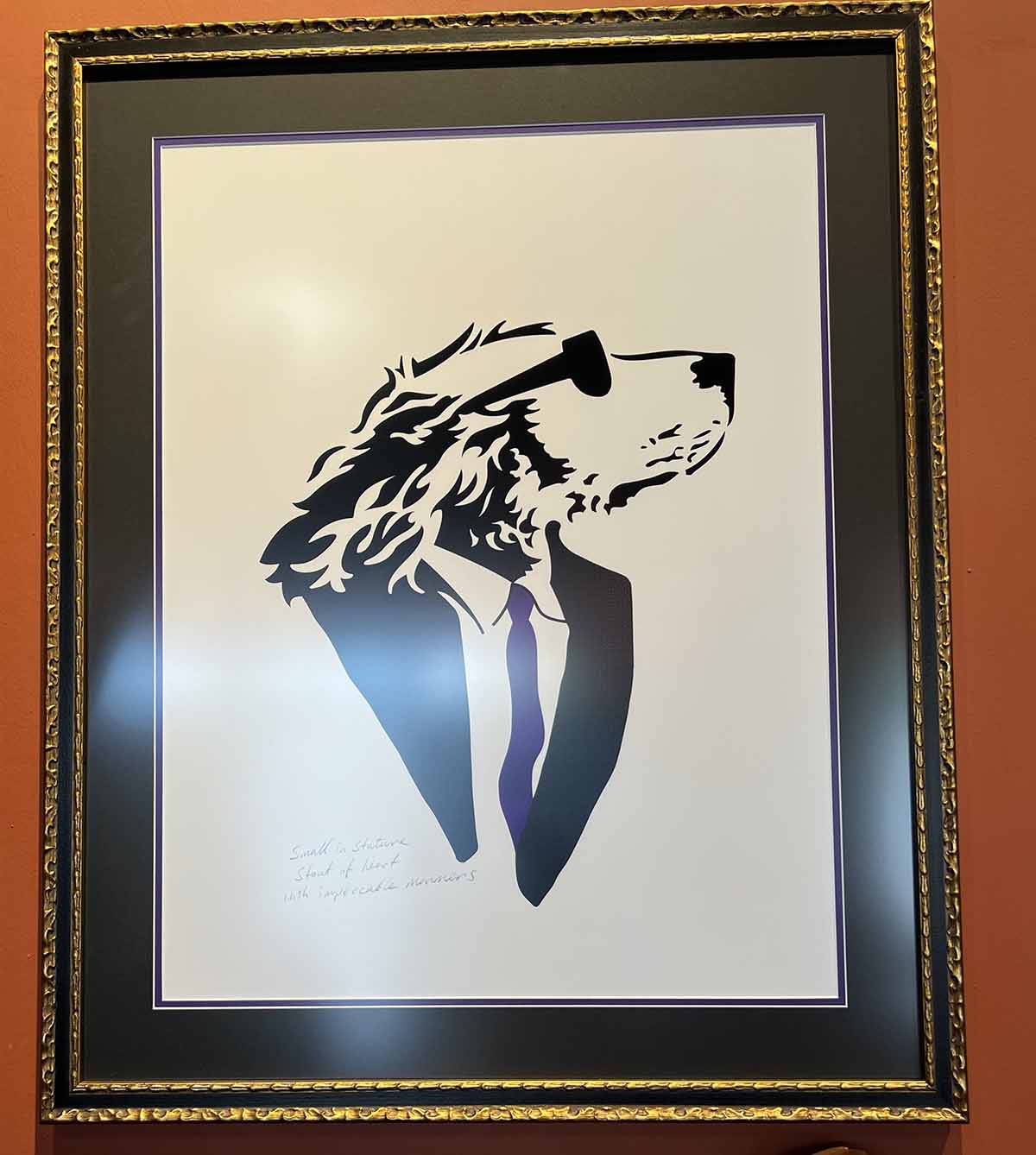by Anna Cooke
Remember riding the merry-go-round, and the feelings you had as a child as it whirled around? There were the colorful lights and the bejeweled horses. The scenery in and around the ride coupled with the music felt surreal and enveloping. As the merry-go-round gained speed, reality collided with the imaginary. Nothing else mattered except that moment of being temporarily transported into another world. The scenery beyond the perimeters of the merry-go-round simply disappeared into one dreamy landscape of color, reminiscent now of Van Gogh’s Starry Night in the traveling exhibition, The Immersive Experience.
A few weeks ago, before it officially opened to the public, we were invited to attend a private showing of Lonely Dog, The Immersive Experience. Standing in the middle of a 360-degree cavernous theater in Orlando to take in the surround sounds and artistic visuals had a very similar effect to the childhood memory of the merry-go-round all those years ago. Through the power of technology, static artwork morphs into larger-than-life displays of movement, creating a participatory-like experience that is jaw-dropping.
Based on the paintings by New Zealand artist Ivan Clarke, and a novel he co-wrote with Stu Duval, Lonely Dog is the story of a troubadour, who sings his own songs of protest against oppression. Lonely has been bullied, run out of town by some bad cats, rejected, and hunted. All he really cares about is his music, the guitar on his back, and the love of his life. By the way, Lonely is a dog whose opposing thumbs make his guitar-picking legendary. Our protagonist goes from hound to hero in a heartbeat playing his Houndskiffle Blues, as it’s referred to in the story.
Clarke’s paintings of anthropomorphic dogs and cats have been animated to create a cast of characters, each with unique traits and foibles. The permanent exhibition transports its viewers into a stunning visual adventure on the life of Lonely Dog, “a misunderstood orphan who overcomes bullies to become a legend whose music heals a divided society of posh cats and working-class dogs in the fictional place of Alveridgea.”
Bringing Clarke’s vision to life was inspired by one simple black and white sketch of Lonely Dog, years ago spotted by one of the show’s producers. “When I saw that image of Lonely, I had to learn more about the artist,” said Cliff Dew. “When I found out there was a novel, of course I had to read it, and could not put it down until I finished it.”
Rob Pearlman, who co-produced Lonely Dog alongside Dew, said Ivan Clarke was first inspired to paint Lonely Dog’s dream world when he left home for vacation. “He imagined what his own dog was doing in his absence,” said Pearlman.
Around 200 pieces of Clarke’s original artwork have been animated and projected across 35 projectors to create the Lonely Dog Immersive Experience. All set to an original soundtrack, parts of the 30-minute show are narrated by singer/songwriter Geoff Pearlman, who is Rob’s brother. Geoff also sings and plays guitar on the Lonely Dog soundtrack.
Four years in the making, production began a year before the pandemic and continued throughout the lockdown. About 185 people from around the world collaborated in the creative process and production. Thanks to technology, artists worked remotely on computers to create the CGI and 2D Animation. Communication was accomplished through the use of Zoom and Facetime. All in all, there are more than a million pixels of illumination in over a million frames of video, bringing this beloved story to life.
Lonely Dog Immersive Experience is a grown-up’s turn at the merry-go-round, a timeless memory to be shared by the entire family. Orlando has a new attraction, dog lovers, and this one is unforgettable.
In addition to the immersive experience, the ticket price includes:
An art gallery showcasing 40 pieces of artwork by Ivan Clarke.
Virtual Reality Lounge – Guests will fly alongside Lonely Dog on a journey that soars through the skies and dives into the depths of the sea.
Selfie Salon – Participants can snap a photo alongside a couple of Lonely Dog’s characters to share on social media.
Art Studio – Aspiring artists may leave behind their own works of art for display.
Music Lounge – Scheduled live entertainment by local area artists.
Merchandise – Main lobby is also a veritable array of sights to purchase for the dog, art and music lover.
Details:
Monday through Saturday: 11am – 9pm
Sunday: 11am-7pm
4900 International Drive, Orlando (an outparcel located on the property of Premium Outlets).
Ticket Price: $34.57 per person
Only trained service dogs are permitted.
To purchase tickets, call 844.566.3593 or visit www.lonelydogorlando.com
NOTE: $1 of every ticket sold will be donated to Happy Trails Animal Rescue and their Community Resource Center, a Central Florida 501c3. www.happytrailsanimalrescue.com

#Orlando #Entertainment #DogLovers #OrlandoAttractions #PremiumOutlets #LonelyDog #Music #Art #ImmersiveExperience




You must be logged in to post a comment.